Hydro Nexus
Digital Interaction Design
#Interaction Design #Digital Media
Open Street NYC
1 Architectural Designer
Collaborated with:
Interaction Design
Experience Design
Digital Design
Architectural Design
My Role/Contribution:
Timeline:
Aug. 2021 - Dec. 2021
Transform New York Water History into an immersive experience
How might we utilize technology to design an interactive experience to upack the stories and turn visitors into participants?
Context
Hydro Nexus is an inflatable architecture located at Open Street Washington Square, New York City. It forms with a continuous cycle of water supply that collects rain(storm) water and greywater from the site. The wastewater pumped through the vessel and output clean water to the proposed programs and the locals. The programs contained inside a bubble conglomerate within a mesh membrane. Each program benefits from the filtration of wastewater and uses it as the main source of water supply. The water vessel wraps around the entire project allowing the distribution of clean water to each conglomerate and the libertarian of dirty water.
Physical Architecture
What are the programs?
aquatic center
aquarium
museum of water
natural coral reef
storage tanks/reservairs
filtration plant
Open Street
New York City's Open Streets program transforms streets into public space open to all. These transformations allow for a range of activities that promote economic development, facilitate pedestrian and bike mobility, and provide new ways for New Yorkers to enjoy cultural programming and build community.
Goal
Design digital Interactive screens as a educational and experiental space that allow visitors to explore different aspects of new york water system history and the programs of THE WATER VESSEL.
Open Street is looking at alternative ways of engaging with the public.
Method
Digital interactive screens for HN provide audiences with a new way of exploration with clear pictures and excellent visual experience to discovery. In order to create a better interactive experience for visitors, the Digital interactive screens is an excellent choice!
Passive role of goers and transform it into a hands-on experience. The digital screen/wall display a curated selection of the program in tile format. The focal point is not display, but discovery, play, and touch.
Interactive walls / screens
1. Digtal display tells stories in a more vivid way.
Digital screen is a showcase for the collection of history. People can glimpse a corner of how the architeure formed.
HN is a place with important educational significance.
How to let tourists get the influence of history and culture while visiting the exhibits?
Architecture that incorporate audiovisual technology can be far more impressive than untouched venues. Vistors will feel the joy and excitement of learning history in a unique and advanced way.
2. Digtal displays is quietly changing the way exhibits are exhibited.
3. Digtal displays have played an important role in promoting New York City to develop online digital experience products, display for HN provides tourists with an immersive experience.
Who is the visitors? New Yorkers
Challenges of designing for these visitors: they could anybody.
What are the needs/goals they share?
Empathize the users
Research on site
Water History of New York City
Programs introduction/guide
About (Timeline)
AR explored
Share your stories
Main Features for the digital screens:
What we need to know?
Water History of New York City
Programs in the architecture
Site conditions
Wastewater Treatment Process
Needed information + Digital screen
Explore HN stories with multi-sensational interactions
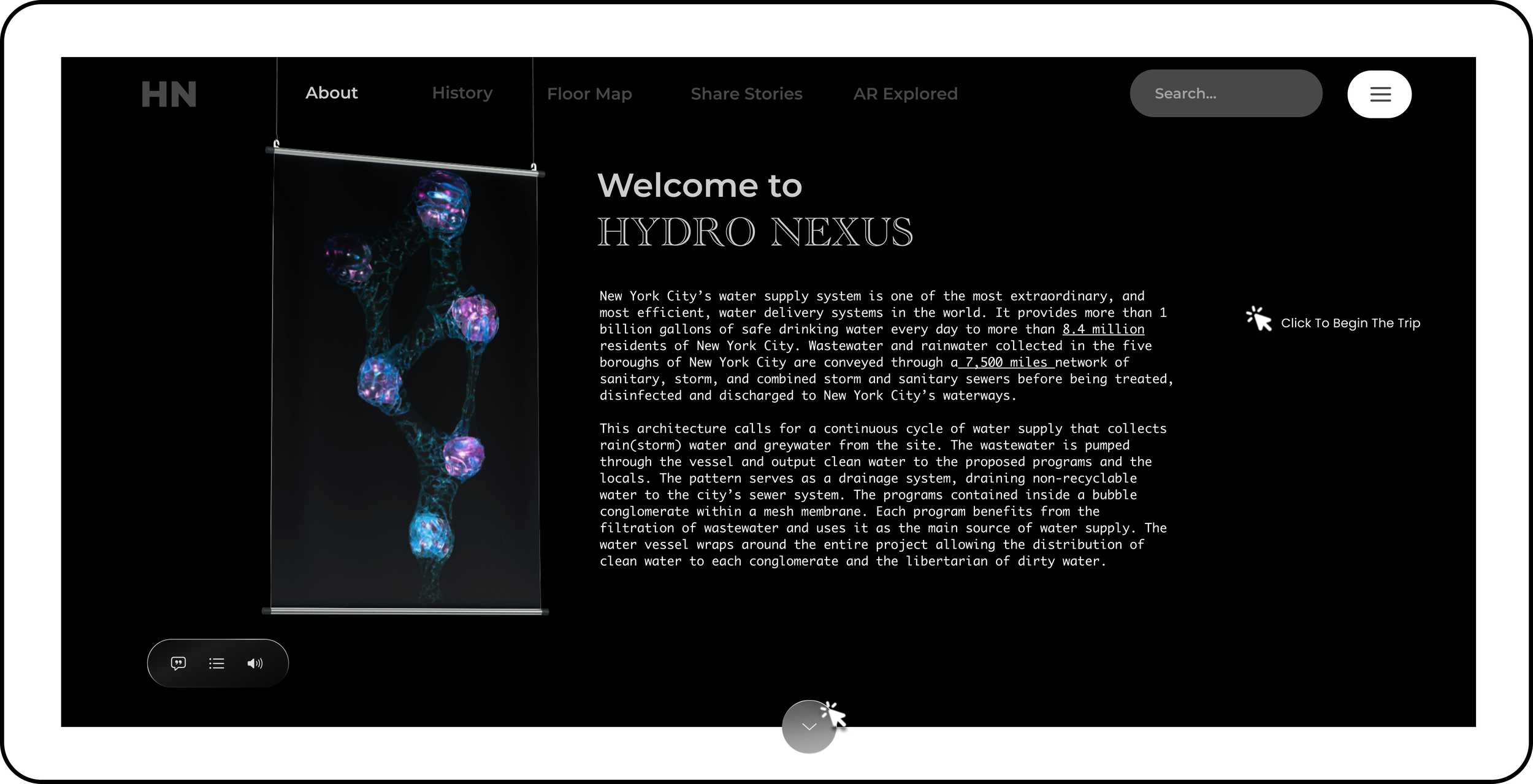
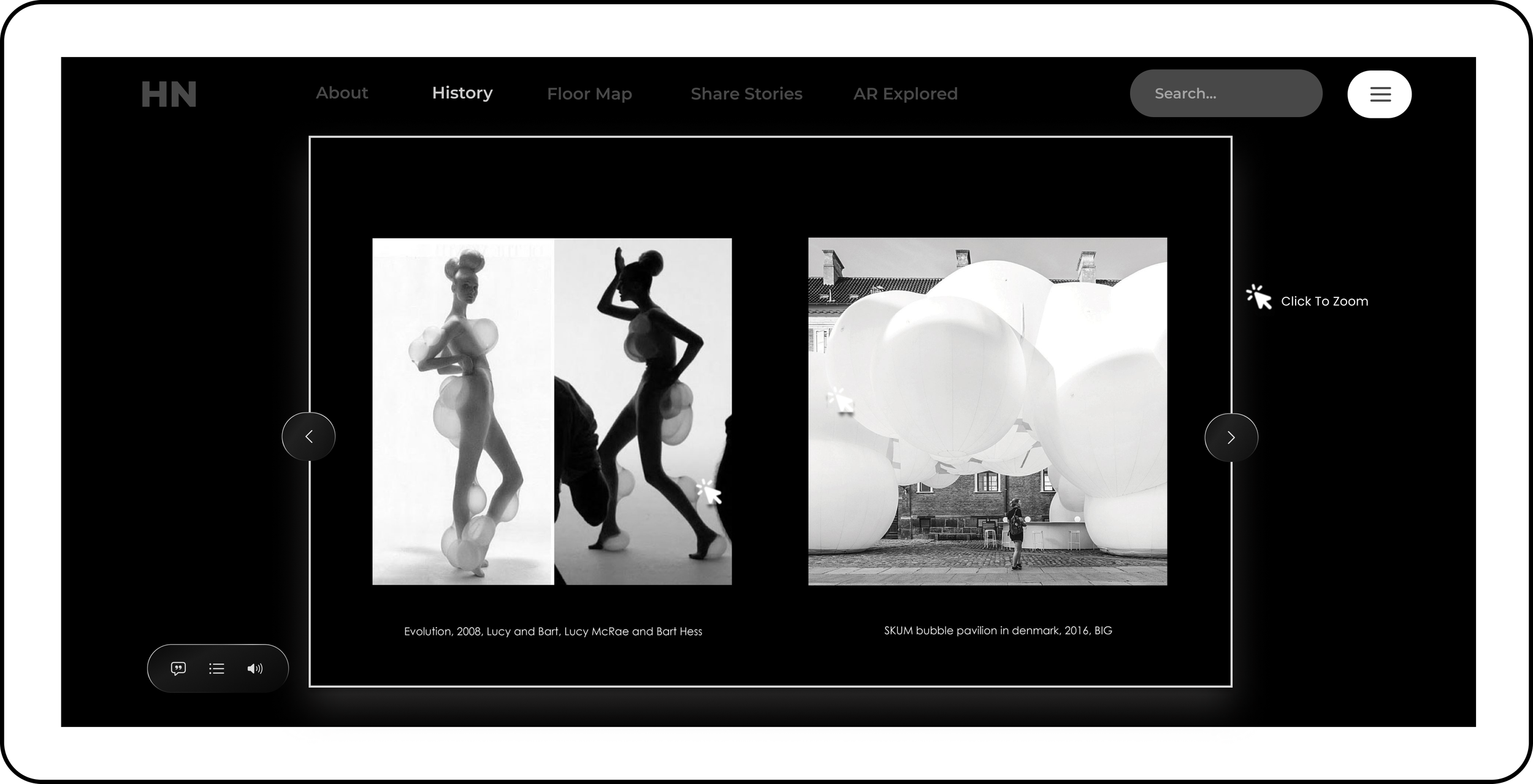

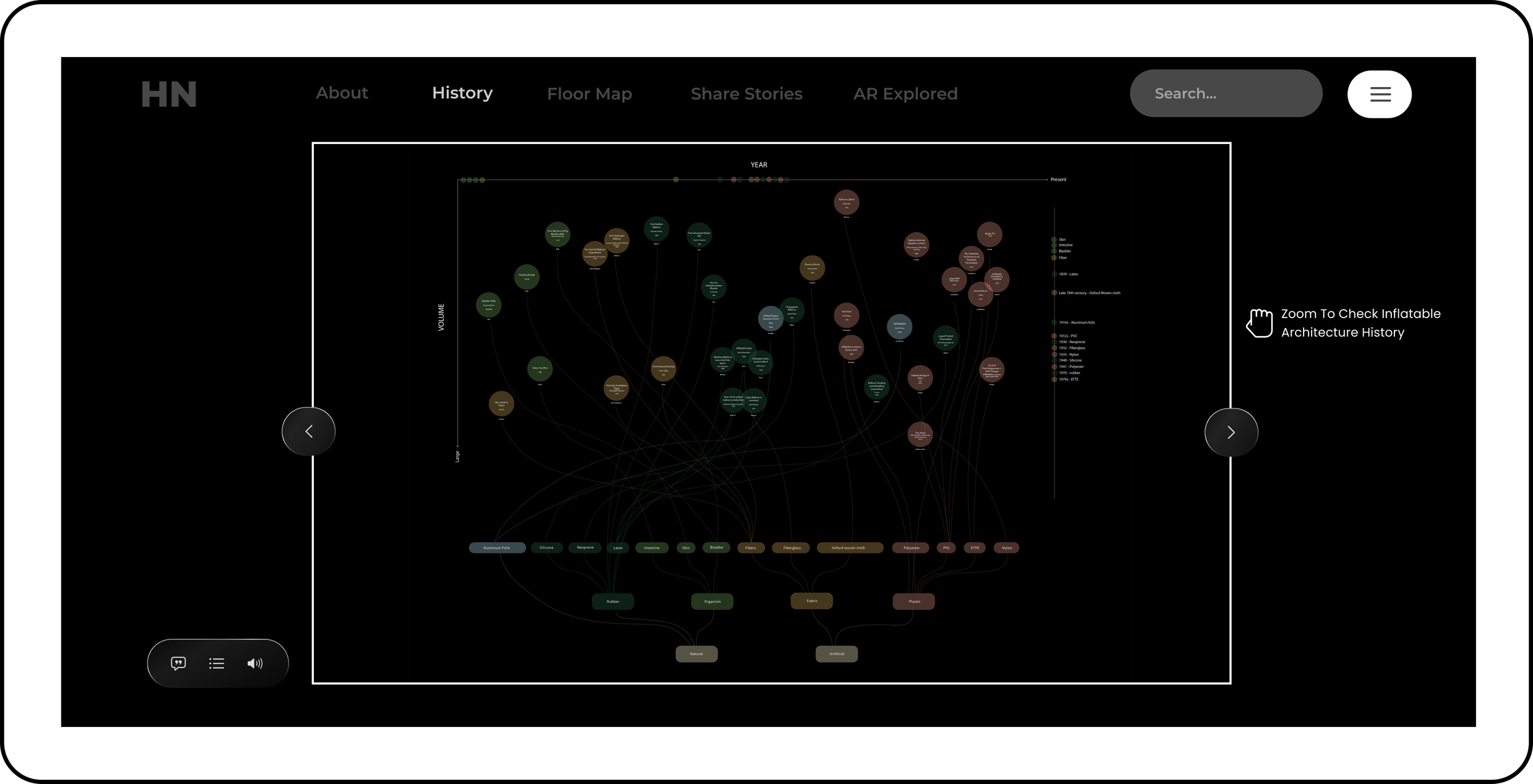
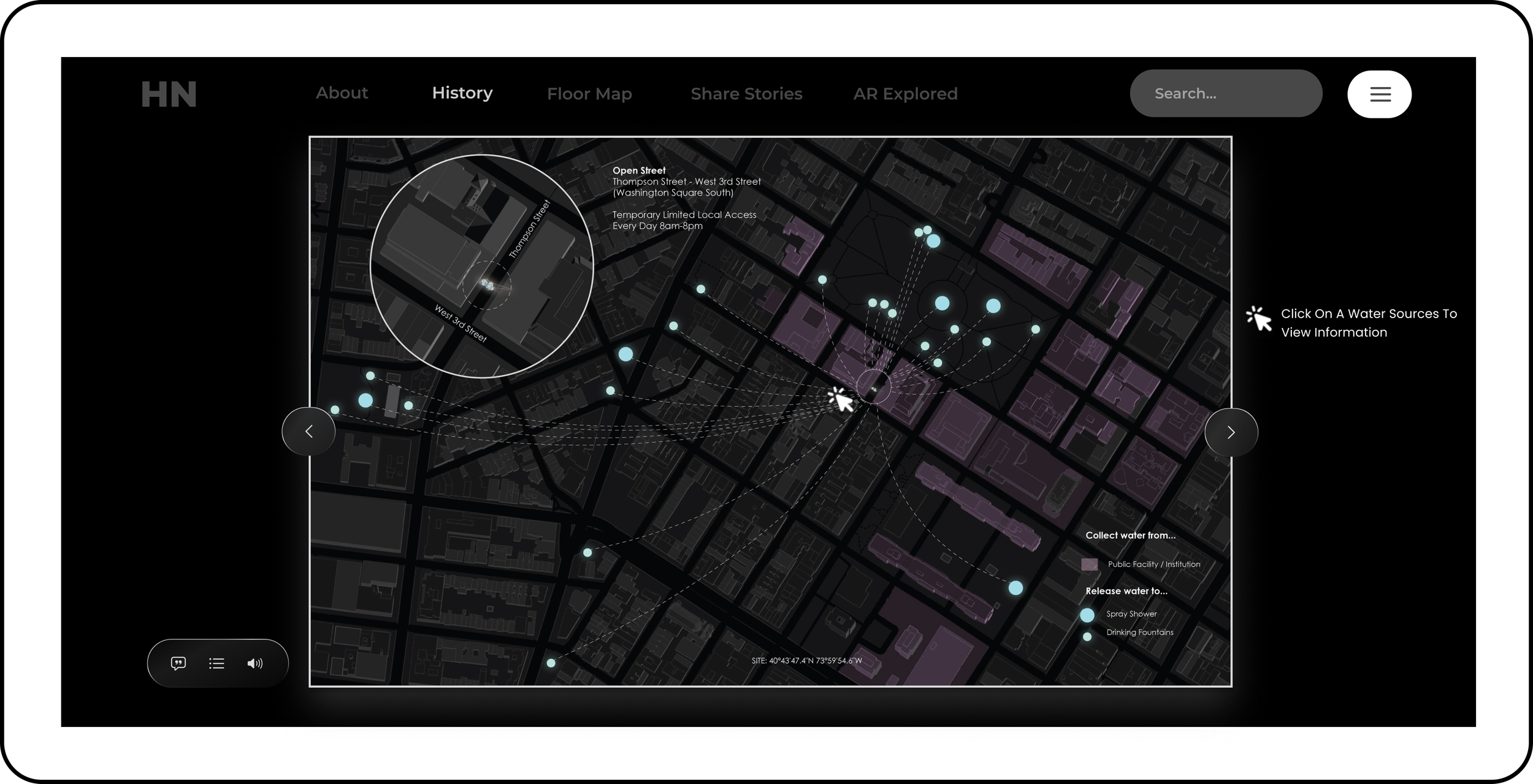
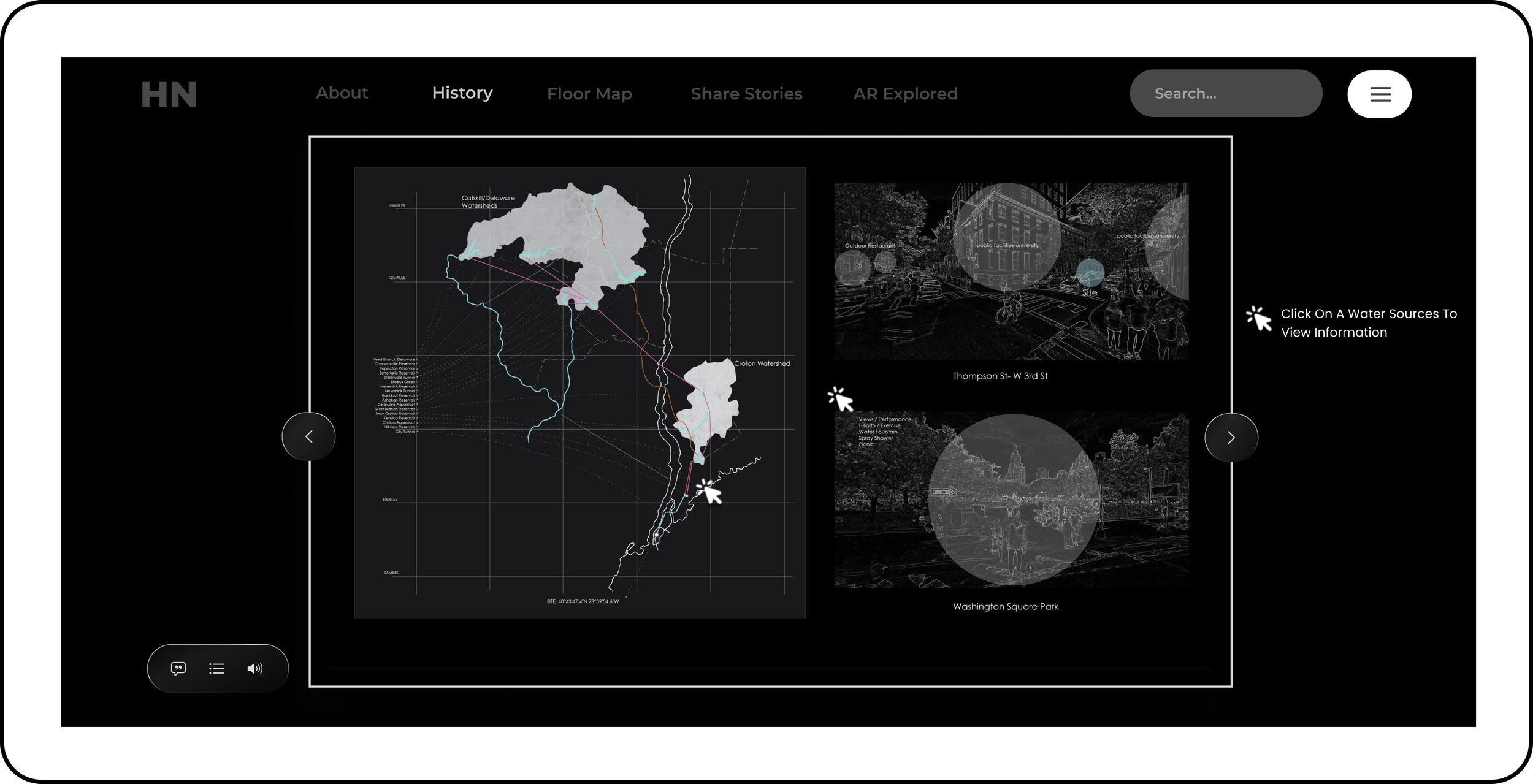
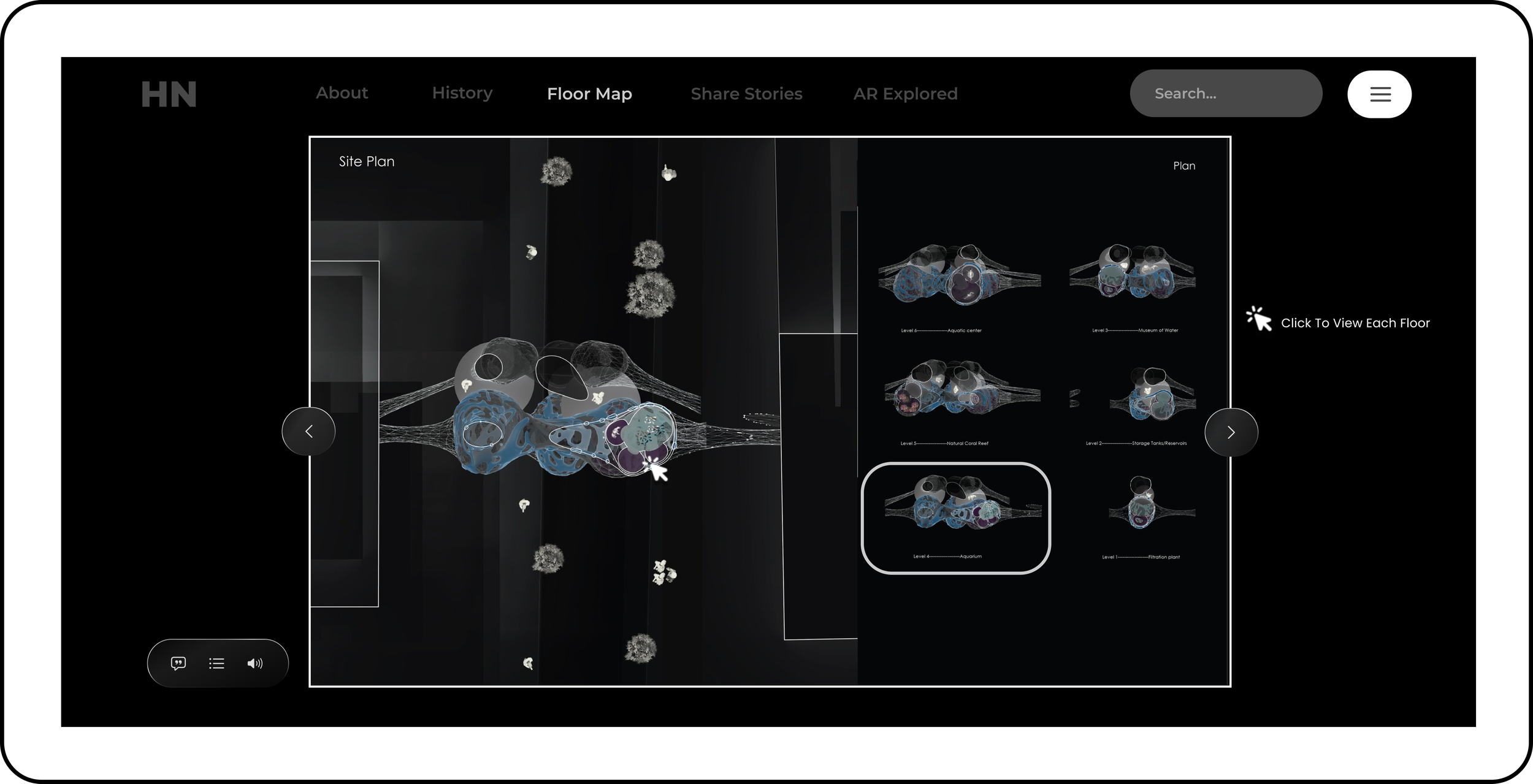



Digital interaction screens allow visitors to explore and play
visitors can connect their mobile devices to the wall via Bluetooth, download and save their favorites, and view tours and collections created by previous visitors.
Reflections
What other technology Hydro Nexus can use?
Museum apps: Mobile apps have become an integral part of our everyday lives, and they also have applications in the leisure and entertainment arenas. In view of this, it's hardly surprising that leading cultural institutions like MoMA have developed their own apps to make artworks more accessible and foster a sense of curiosity in every visitor. Using these apps, visitors can share their discoveries in social network.
Interactive audio guides: The Louvre Museum has set a good example of how a traditional museum tool like an audio guide can be given a more engaging touch via interactive technology. The museum offers audio guides on a Nintendo DS device, whose dual screen lends itself beautifully to displaying interactive maps. Adding to that is GPS technology, which makes wayfinding smooth, and delivers a large amount of visual content -including 3D images- to complement the auditory experience.
Augmented & virtual reality are also being used by world-class museums to help visitors interact with exhibits using their mobile phones. At the Detroit Institute of Arts, AR apps get visitors involved with the artworks by getting them to solve puzzles or find specific details within an art piece.






